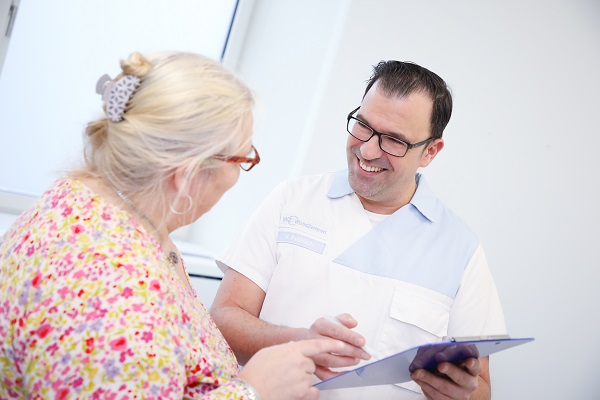Chronic and difficult-to-heal wounds
The legislator has limited the scope of services for specialized wound care facilities to chronic and difficult-to-heal wounds. Every person with statutory or private insurance is entitled to care.
Unfortunately, there are currently no valid or evidenced criteria for assessing chronic or difficult-to-heal wounds.
Chronic wounds are those that cannot be closed within 4-12 weeks.
At our WCC-WoundCareCenters, we work according to current standards and guidelines. Our staff have a high level of expertise and aim to work with you to heal your wound as quickly as possible and improve your quality of life.
Learn more about the most common types of wounds and causes of chronic and difficult-to-heal wounds in the following sections.
Acne inversa and other forms of acne
Acne inversa/ Hidradenitis suppurativa
Acne inversa is a painful, chronic inflammatory skin disease that mainly affects the armpits, groin and pubic and anal areas. The condition often begins with hair root inflammation and then spreads in the form of recurrent inflammation and abscesses. It is estimated that 1% of the population is affected. read more
Pressure Ulcers (Decubitus)
Decubitus is the localized damage to the skin and/ or the underlying tissue. As a rule, it arises over bony protrusions (predilection points), as a result of pressure or in combination with shear forces (shifting of the skin layers). read more.
Diabetic Foot Syndrome (DFS)
Diabetic foot syndrom (DFS) includes all pathological changes of the diabetic´s foot, which can be traced back to the consequential damage caused by diabetes. read more.
difficult-to-heal wounds
Wounds are difficult to heal if they heal very slowly due to internal or external factors. They are often associated with restrictions in the quality of life of those affected. In order to recognize the factors that inhibit wound healing, to avoid further complications, to improve the quality of life of those affected and to achieve stable wound closure, specialist expertise beyond the usual professional knowledge is required.
Factors influencing wound healing may include:
- particularly large and deep wounds
- recurring wounds
- the wound is a symptom of a chronic disease
- chemotherapy and / or radiotherapy
- Medications affecting wound healing
- concomitant diseases affecting wound healing
- pain
- Loss of mobility
- Multi-resistant pathogens
- Addictive diseases
- Poor nutritional status
- Depression
- Dementia
- Anxiety
- v.m.
The care of these difficult-to-heal wounds requires a targeted sector-wide application of anamnestic-diagnostic and therapeutic measures. But also measures to determine the need for training and, derived from this, the individual results-oriented training or information of the affected person or his caregiver.




